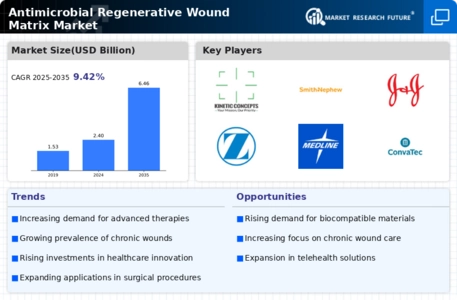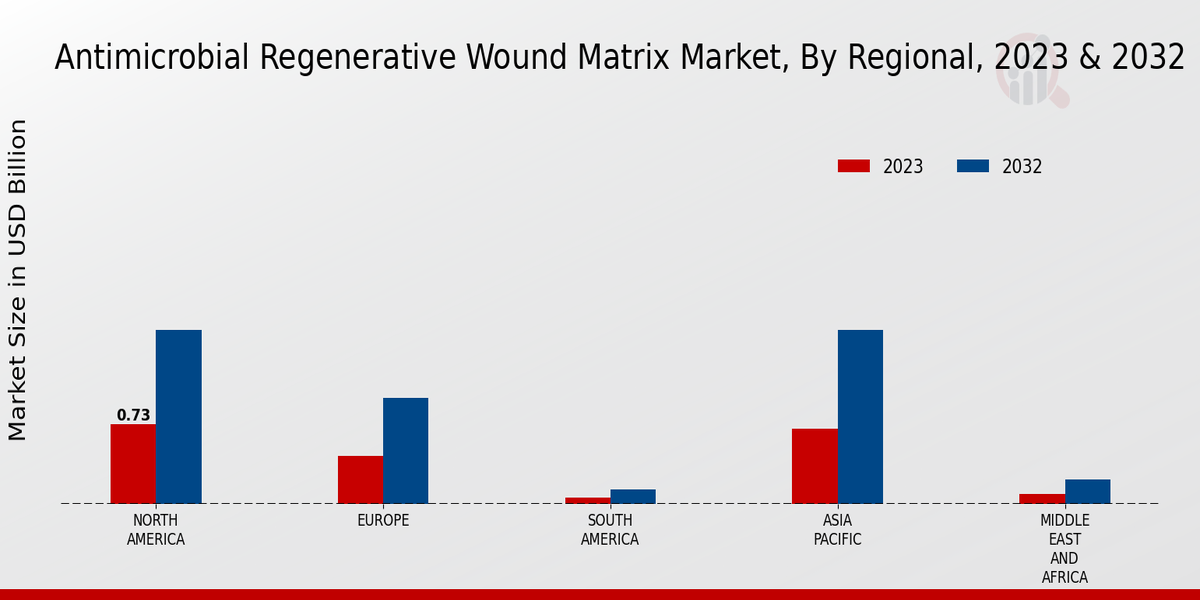Supportive Regulatory Framework
A supportive regulatory framework is facilitating the growth of the Global Antimicrobial Regenerative Wound Matrix Market Industry. Regulatory bodies are increasingly recognizing the need for innovative wound care solutions and are streamlining approval processes for new products. This environment encourages manufacturers to invest in research and development, leading to a wider array of antimicrobial regenerative matrices entering the market. As regulations evolve to support advancements in wound care technology, the industry is poised for significant growth. The anticipated compound annual growth rate (CAGR) of 9.41% from 2025 to 2035 underscores the positive outlook for this market.
Increasing Healthcare Expenditure
The rise in global healthcare expenditure is a significant factor influencing the Global Antimicrobial Regenerative Wound Matrix Market Industry. Governments and private sectors are investing more in healthcare infrastructure and advanced medical technologies. This trend is particularly evident in developed regions, where healthcare budgets are expanding to accommodate innovative treatment options. As a result, the adoption of antimicrobial regenerative wound matrices is likely to increase, as healthcare providers seek to improve patient care and reduce long-term costs associated with chronic wound management. This shift in spending priorities is expected to bolster market growth in the coming years.
Rising Incidence of Chronic Wounds
The increasing prevalence of chronic wounds, such as diabetic ulcers and pressure sores, is a notable driver for the Global Antimicrobial Regenerative Wound Matrix Market Industry. As the global population ages and the incidence of diabetes rises, the demand for effective wound care solutions intensifies. In 2024, the market is projected to reach 2.4 USD Billion, reflecting the urgent need for advanced treatment options. Chronic wounds often require prolonged care, and antimicrobial regenerative matrices offer a promising solution by promoting healing and reducing infection rates. This trend is expected to continue, significantly impacting market growth.
Growing Awareness of Infection Control
Heightened awareness regarding infection control in wound management is driving the Global Antimicrobial Regenerative Wound Matrix Market Industry. Healthcare professionals and patients alike are increasingly recognizing the importance of preventing infections in wound care. Antimicrobial regenerative matrices, which incorporate agents that inhibit microbial growth, are gaining traction as effective solutions. This growing emphasis on infection prevention is likely to lead to higher adoption rates of these products in clinical settings. As the market evolves, the focus on infection control will continue to shape product development and influence purchasing decisions among healthcare providers.
Technological Advancements in Wound Care
Innovations in wound care technology are propelling the Global Antimicrobial Regenerative Wound Matrix Market Industry forward. The development of advanced materials, such as bioengineered matrices that mimic natural tissue, enhances healing processes and reduces complications. These technologies not only improve patient outcomes but also streamline treatment protocols, making them more efficient. As healthcare providers increasingly adopt these cutting-edge solutions, the market is anticipated to grow substantially. By 2035, the market could reach 6.46 USD Billion, driven by ongoing research and development efforts aimed at creating more effective wound care products.






















Leave a Comment